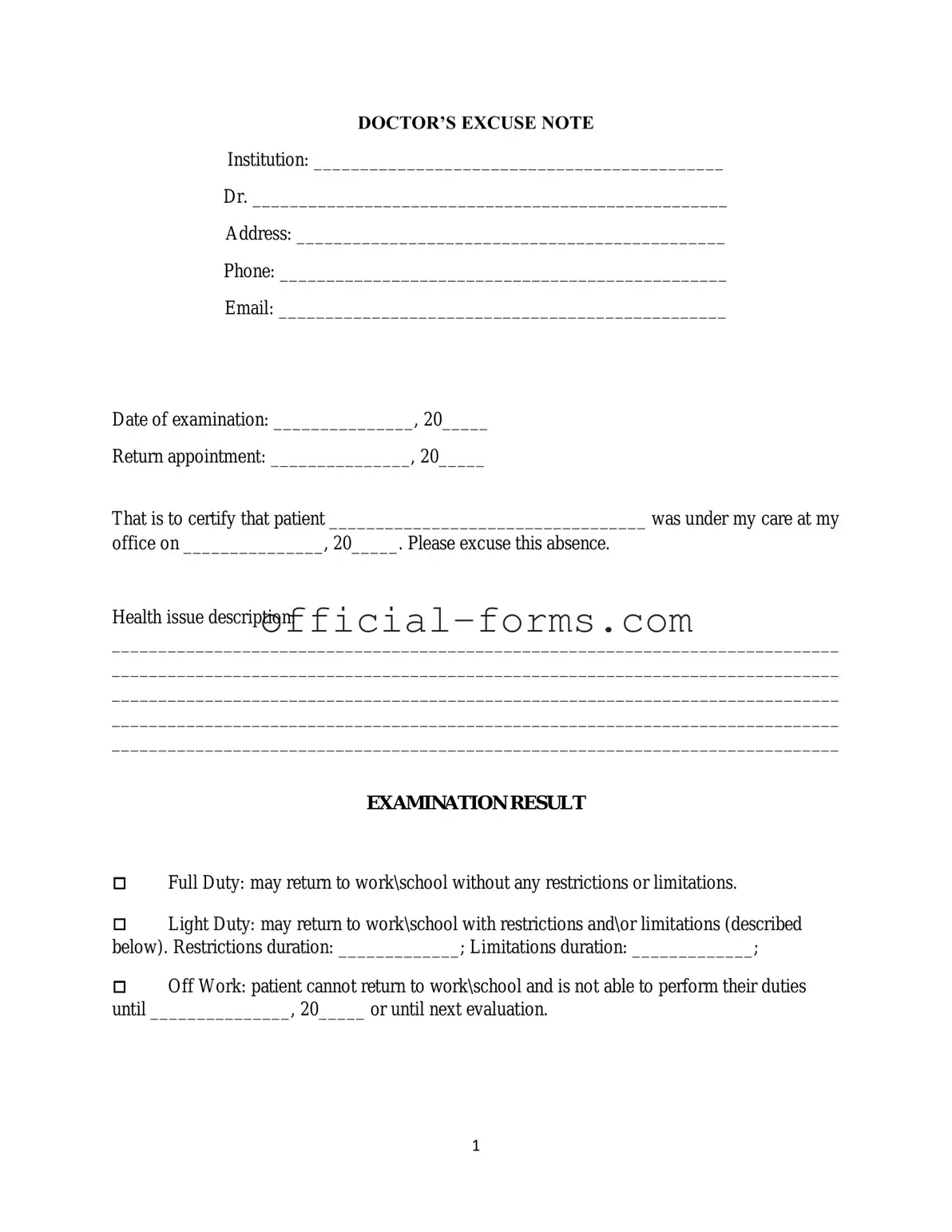Blank Doctors Excuse Note Form
The Doctors Excuse Note form is a document provided by healthcare professionals to verify a patient's medical condition and the need for absence from work or school. This form serves as official proof that an individual has sought medical attention and is unable to fulfill their regular obligations due to health reasons. Understanding how to obtain and use this form can help individuals navigate their responsibilities while prioritizing their well-being.
Open My Doctors Excuse Note Now
